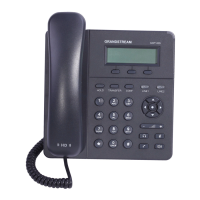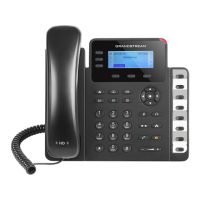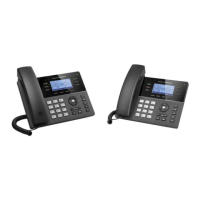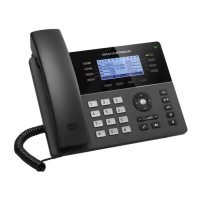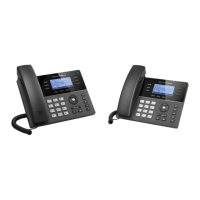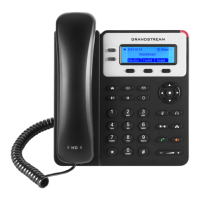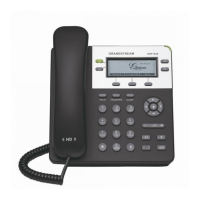
Do you have a question about the Grandstream Networks GXP1450 and is the answer not in the manual?
| Brand | Grandstream Networks |
|---|---|
| Model | GXP1450 |
| Category | IP Phone |
| Language | English |
Lists key features and specifications of GXP2120, GXP2110, GXP2100, GXP1450, and GXP140x phones.
Details technical specifications, protocols, and network interfaces for the Grandstream phone models.
Lists the contents included in the phone's package, detailing each item.
Provides step-by-step instructions for physically connecting the phone to power and network.
Explains the functionality and package contents of the GXP EXTension module for specific phone models.
Outlines the warranty policy for the Grandstream phones and procedures for returns or repairs.
Describes the various elements and icons displayed on the phone's LCD screen during idle and active states.
Details the function of each button on the phone's keypad.
Guides on initiating calls using handset, speaker, headset, and managing multiple SIP accounts/lines.
Outlines the different methods for completing phone calls, such as on-hook dialing and redialing.
Guides users on how to make direct IP calls between phones without a SIP proxy.
Explains how to receive and manage incoming calls, including call waiting.
Details how to enable or disable the 'Do Not Disturb' feature via the phone's LCD menu.
Covers managing active calls, including hold, mute, and transfer functionalities.
Describes how to place calls on hold and resume them, and manage multiple calls.
Explains how to mute or unmute the microphone during an active call.
Details different call transfer methods: Blind, Attended, and Auto-Attended.
Explains how to initiate and manage conference calls on the phone.
Describes the Message Waiting Indicator (MWI) and how to access voicemail.
Explains the Shared Call Appearance feature for synchronized SIP line status.
Lists various call features, including caller ID management and call forwarding options.
Describes how to customize the phone's LCD screen and use XML applications.
Provides instructions for configuring the phone using its on-device LCD menu and keypad.
Guides users on accessing and configuring the phone through its web-based graphical user interface (Web GUI).
Defines the information displayed on the phone's Status pages, including account and network status.
Explains the various settings related to SIP accounts, network configuration, and general phone settings.
Details settings for general phone configuration, call features, ring tones, audio, LCD display, and web services.
Covers network settings, including IP configuration, DHCP, PPPoE, and advanced network options like 802.1X.
Outlines maintenance options such as web access, firmware upgrades, and syslog configuration.
Explains how to manage contacts, enable XML phonebook downloads, and configure LDAP settings.
Details Network Address Translation (NAT) settings, including STUN server and random port configurations.
Explains how to configure weather information display on the phone's LCD.
Describes how to enable and use the public mode for hot desking on the phone.
Guides on viewing, editing, and dialing contacts via the Web GUI and click-to-dial feature.
Provides steps to upgrade phone firmware using the device's keypad menu.
Explains how to upgrade phone firmware using the web-based graphical user interface.
Offers guidance for upgrading firmware using remote servers when a local server is unavailable.
Describes how to download configuration files for the phone via web interface or TFTP/HTTP/HTTPS.
